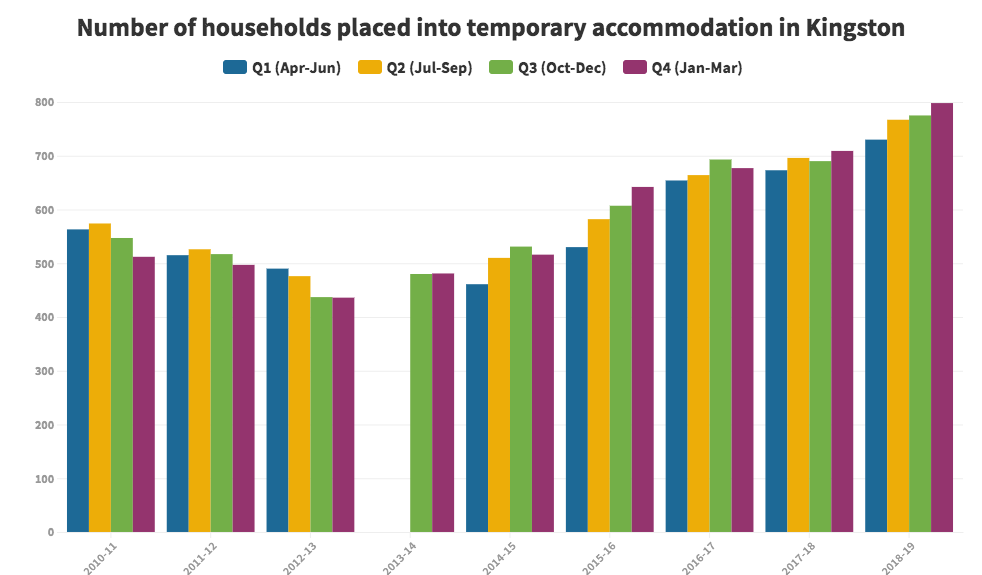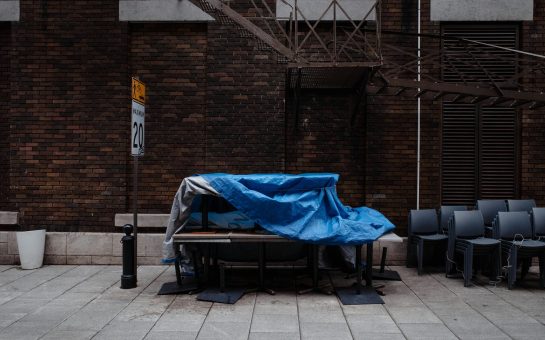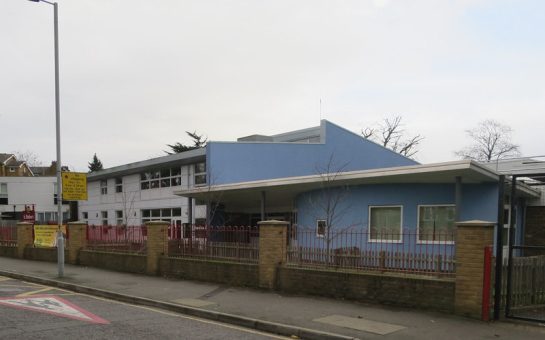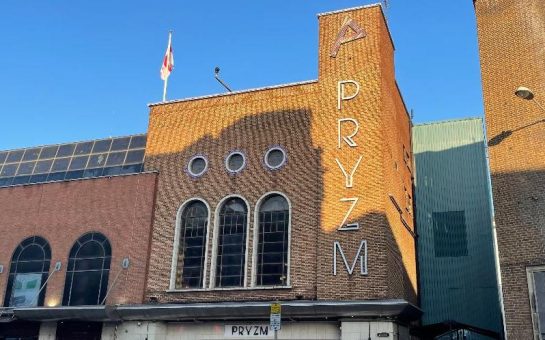![]() By Anna Mackenzie
By Anna Mackenzie
January 13 2020, 12:00
Follow @SW_Londoner
The number of people living in temporary accommodation in Kingston upon Thames increased by 65.9% between 2014 and 2019, figures gained from an FOI request revealed.
This comes after Kingston upon Thames came in 24 of the top 30 highest local rates of homeless people across England in a report published by charity Shelter in December 2019.
The report estimated that there are a total of 2,317 people living in temporary accommodation or rough sleeping in Kingston as at March 2019.
Kingston Churches Action on Homelessness (KCAH) operational director Matt Hatton said: “From our point of view, the longer someone spends on the streets the more entrenched they become and the harder it becomes to help them out of that situation.
“They are more likely to develop addictions, their mental health is going to worsen, they’re more likely to come to the attention of the criminal justice system, and they’re more likely to use A&E services.
“So it’s a real drain on all the services and it makes sense to try and help people out of that critical moment as quickly as possible.”
Upward trend over past 5 years
The FOI findings showed that the number of people placed in temporary accommodation by Kingston council increased from 481 at the end of 2013-14 to 798 in 2018-19.
While the figure was steadily decreasing after 2010, the second half of the decade saw a sharper upward swing. No data was available for April – September 2013.

Senior communications manager at homelessness charity Glass Door Melissa Kerschen said: “We need to keep in mind that homelessness isn’t just visible rough sleeping.
“There are many people who are in shelters, in temporary accommodation, and sofa surfing who don’t get counted often. The reality is always worse than the official statistics.”
“Complex” reasons for homelessness
Ms Kerschen considered ever-increasing property prices as the principal reason for the increasing number of homelessness particularly in south west London.
She said while various factors can cause homelessness, the number one reason around the mid-2010s was the ending of short-term leases.
According to legislation outlined in the Housing Act 1996, local councils have a duty of care to place people into temporary accommodation as a stepping stone towards finding a longer-term home, however spaces are limited.
Ms Kerschen said in cases where people leave their home due to physical dangers or domestic violence they may classed as ‘intentionally homeless’ and do not qualify for council support in finding temporary accommodation.
She said: “There’s just not enough affordable housing, not enough social housing and there are too many people falling through the cracks.
“The triggers haven’t changed. It’s the lack of support on a systematic level. It’s reaching a crisis point.”
Support to access temporary accommodation
For those who may not be able to access council services, charities such as KCAH work in collaboration with councils to provide temporary accommodation and prevent rough sleeping.
KCAH’s Accommodation Pathway project provides welfare advice and helps secure temporary accommodation for those who may not fit the criteria to be placed under the council’s duty of care.
Mr Hatton said the project aimed to work with tenants to help them overcome the complex issues that may have caused them to become homeless in the first place.
He added: “With austerity and cuts to services, the onus is on us to work collaboratively with the services to get the help that person needs.”
While new legislation such as The Homeless Reduction Act, introduced in April 2018, requires local housing authorities to help any eligible person secure accommodation regardless of whether they’re in priority need or not, it is clear than in practice this may not always be the case.




